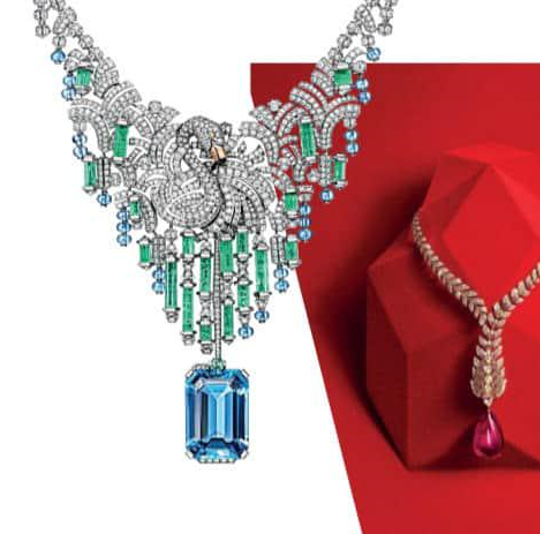
It always begins with a love story.” I’m in Vienna for the launch of Cartier’s new high jewellery collection and Jacqueline Karachi, the brand’s director of high jewellery creation, is telling me about the creative process behind its
high jewellery collections.
Karachi explains, “When we decide on a theme, we research the stones, then present the stones to the team. Each designer chooses the stones they like, because they want to tell their own story around it.”
The theme for Cartier’s latest high jewellery collection, Nature Sauvage, is as its name suggests, centred around animals. And while animals have long been a part of Cartier’s storied history, the end results this time around are far from expected.
“With every collection, we try to illustrate a different side of Cartier. It’s like a puzzle, and with each collection, you understand another point of view. For us, it was important to bring a new, fresh look to Cartier, and to surprise you, because we wanted to bring modernity to the animal theme.”
And, surprise us they did. The pieces in the collection all have a delightful and irreverent twist to them, each of them a testament to the Maison’s savoir faire and spirit of innovation.
HIDE AND SEEK
Within Nature Sauvage and its “theatre of apparitions”, nothing is as it seems. There are animals in unexpected environments, as seen on the Amphista necklace. It features a snake
split into two, its heads crowned with kite- shaped diamonds while the diamond scales have been transformed into a chessboard, illustrated with nine octagonal emeralds from Colombia totalling 14.72 carats.
There are animals hidden in plain sight. Celestun, a necklace that took over 1,000 hours to create, features a diamond-winged flamingo standing among an emerald reed bush, submerged in a lake made up of a 38.50-carat aquamarine set in a pendant.
Then there are animals hidden altogether, as with Mochelys. At first glance, one only sees a diamond and rubellite necklace, culminating in a show-stopping 71.90-carat rubellite. A perfect example of “if you know, you know”, it is only when you fold down the two legs of the turtle to detach it from its resting place and transform it into a brooch that you see the animal in its entirety, head and legs included.
Remember when Karachi said that each designer chooses the stones that they like and want to tell a story about? In this case, “The shape of the stone reminded the designer of a turtle, and the pattern of the scales of turtles, so he wanted to illustrate, to camouflage. You don’t see the turtle, it’s almost impossible to see it. It was very interesting to camouflage an animal into a floral necklace, and the technique was interesting too, to retract the two legs of the turtle.”
Even when you do see the animal in its full glory, things are still not what they seem. Take the panther, which has been part of the brand’s menagerie since 1914. Sure, Panthère de Cartier rings and bracelets exist. But a hybrid of the two? Feast your eyes on Panthère Jaillissante, a diamond ring-bracelet flecked with sapphires and emeralds, punctuated with an 8.63-carat Zambian emerald.
SIGN OF THE TIMES
For Karachi, animals are a way for the brand to communicate that the world is changing. “Throughout Cartier’s history, the style has evolved with the era. Nowadays, we have to imagine different ways to speak about animals, because the [city] is everywhere, so nature has to adapt to the new way of living.
“We speak about our time, and we have to evolve, so we evolve with the new generation of people who wear the jewellery. We have to speak to them in their own language. In fact, we designers, are like sponges. We absorb what is around us. Speaking about animals is the way to speak about evolution.”
This time around, the designers told stories of animals in unique and boundary-pushing settings, creating unexpected encounters. “We have to adapt to our environment, and to every environment…maybe that’s the message [of the collection]. Not the message, but a message,” Karachi points out. Nature Sauvage is a reflection of the relationship between the city and nature, at this current moment—and this love story is one that will continue to evolve over time.